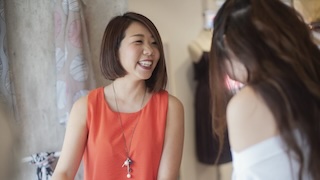TOKYO, Sep 08 (News On Japan) - A worldwide boom in matcha has fueled what some are calling a “matcha bubble,” sending the price of tea leaves sharply higher.
The surge in demand has left Japanese producers struggling to keep up as global consumers increasingly embrace the drink’s unique flavor and health appeal.
Foreign tourists now make up the vast majority at matcha workshops in Tokyo, with one school reporting that nine out of ten attendees are visitors from overseas. Many cite taste and health benefits as the key attractions. An American tourist said, “I just love the taste. It’s healthy, too,” while a visitor from Mexico noted, “It’s not too sweet, it has a special flavor, and it makes you feel good.”
Young people also point to matcha as a study aid, saying it provides the right amount of caffeine for concentration without the jitters of coffee. Specialty shops abroad, such as Zurich’s trendy “Matcha Club,” now offer fashionable spaces where customers sip green drinks while shopping. Exports of Japanese green tea, including matcha, have climbed steadily for five consecutive years, with 2025 already on track to match last year’s record.
Farmers and processors describe the situation as both welcome and overwhelming. Tea grower Satoshi Horii said, “It makes me smile—it’s really good news.” Prices for leaves have nearly doubled from last year, prompting farmers to shift more acreage from sencha to tencha, the leaves used for matcha. Processors, however, face capacity shortages. “We just can’t keep up with the orders,” said Masayuki Maruyama of Maruyama Tea. His company recently built a new matcha-only facility but is already struggling to meet demand from the U.S., Europe, and increasingly, the Middle East. “It’s fair to call it a matcha bubble,” Maruyama said.
The roots of the trend stretch back decades. At Kyoto’s historic Nakamura Tokichi Honten, seventh-generation president Shogo Nakamura recalls pioneering matcha sweets in the late 1990s. “We started with soft-serve ice cream,” he said, noting that matcha was once seen as a formal drink but was transformed into an everyday treat. While his desserts attracted early foreign visitors, Nakamura credits another player with sparking the boom: Häagen-Dazs. The brand launched its “Green Tea” ice cream in 1996, introducing matcha flavor to a wider audience and paving the way for the global craze.
Source: TBS















